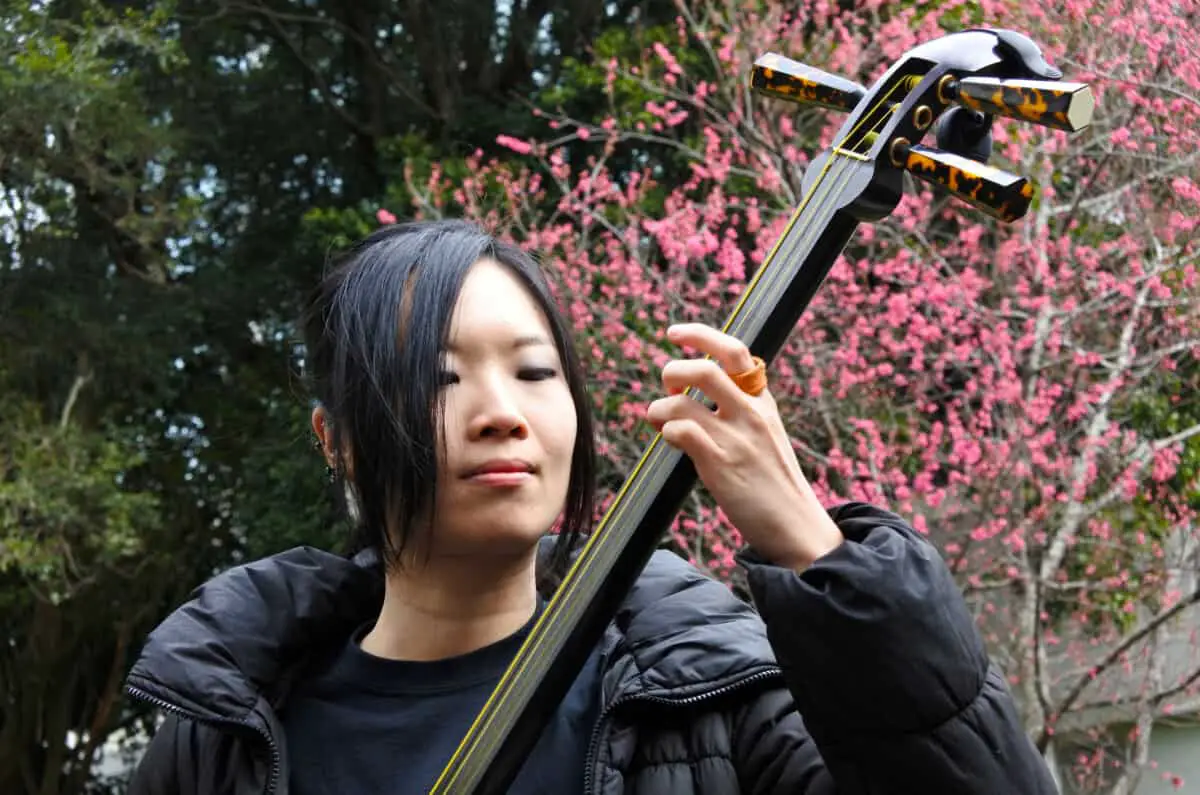The shamisen, a three-stringed traditional Japanese musical instrument developed from the Chinese instrument sanxian, a traditional Japanese musical instrument. A plectrum called a bachi is used to play it. Shamisen is the most common Japanese pronunciation.
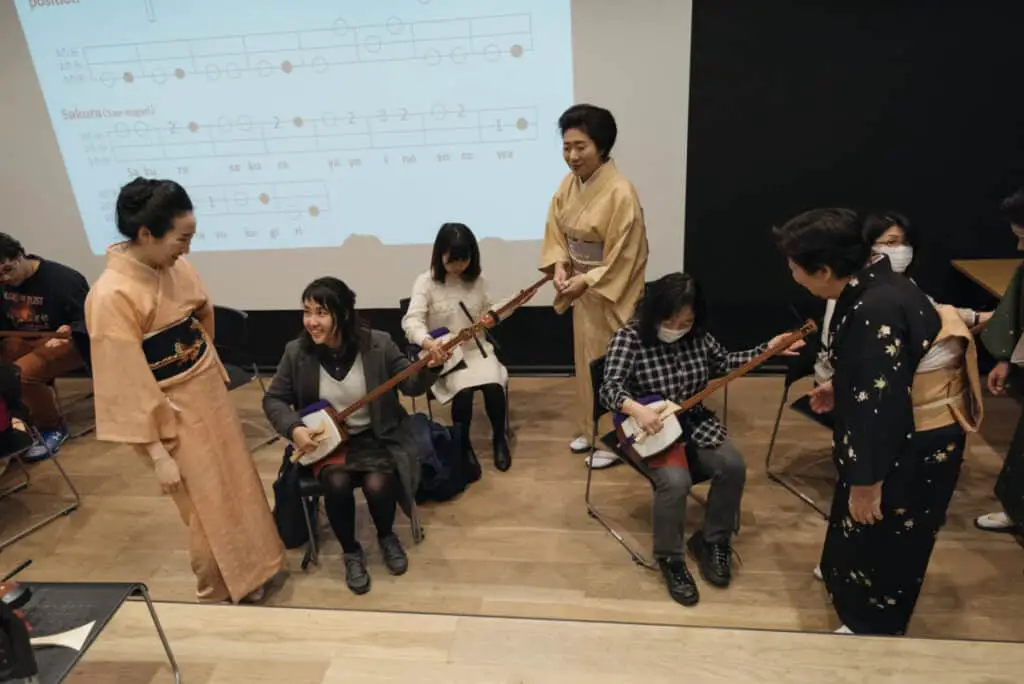
The shamisen’s design varies in shape depending on the context in which it is played. The instrument used to accompany kabuki has a narrow neck, allowing for the genre’s nimble and virtuoso demands.
To complement the more powerful music of puppet shows and folk songs, the one used to accompany them does indeed have a longer and thicker neck.
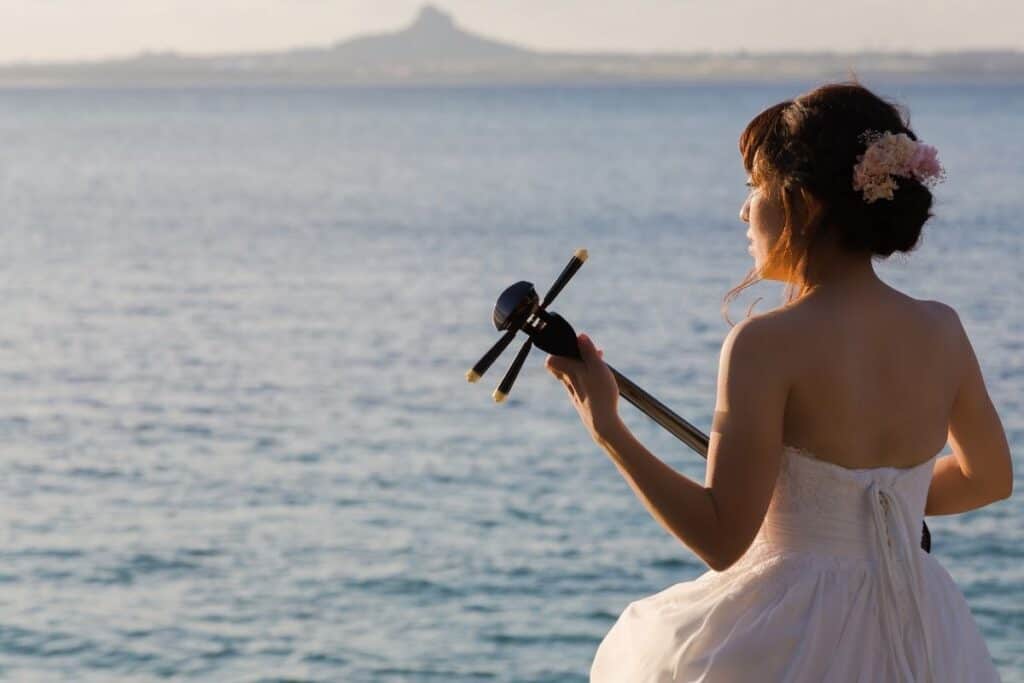
The shamisen is a plucked stringed instrument with a unique sound. It is built in the same way as a guitar or a banjo is, with a neck and strings strung over a resonant body.
The shamisen’s neck is fretless and thinner than a guitar or banjo’s. The body is shaped like a drum and has a hollow body wrapped in the skin on the front and back, similar to a banjo. The skin chosen is determined by the music genre and the player’s competence.

The shamisen’s three strings are constructed of silk (traditionally) or nylon. They’re stretched between the instrument’s pegs and a fabric tailpiece fixed at the end of the rod that protrudes on the opposite side of the body.
The strings are stretched across the body and elevated from it by a koma (bridge) that sits directly on the tight skin.
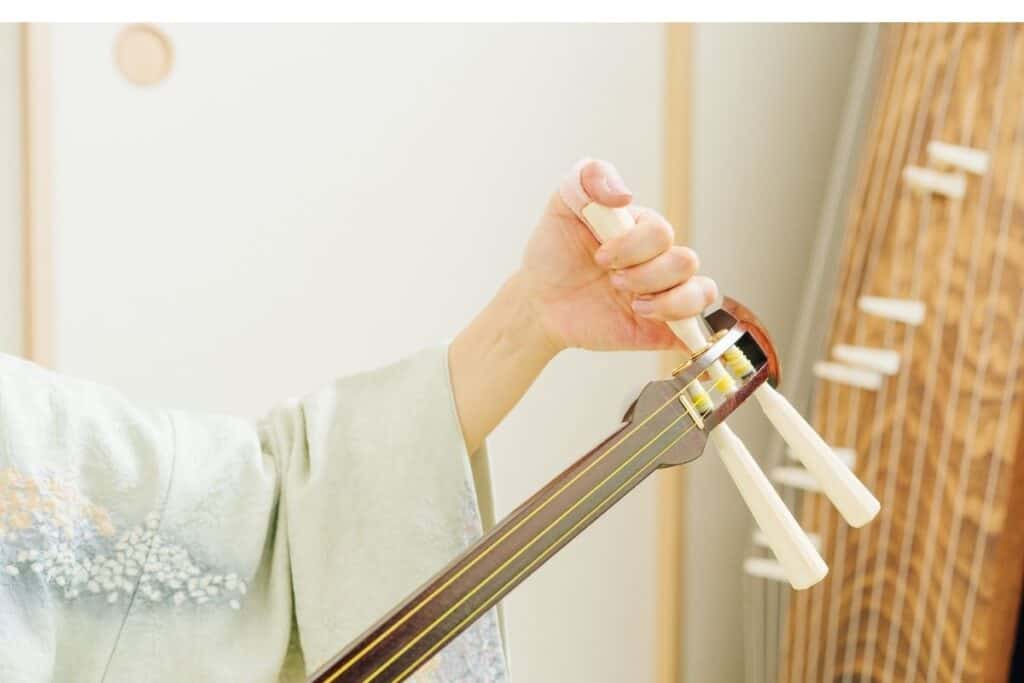
Silk strings have been utilized in the past. Silk, on the other hand, is frequently broken over a short period of time, thus it is only used for professional concerts.
Nylon or ‘tetron’ strings are commonly used by students because they last longer and are less costly than silk strings.
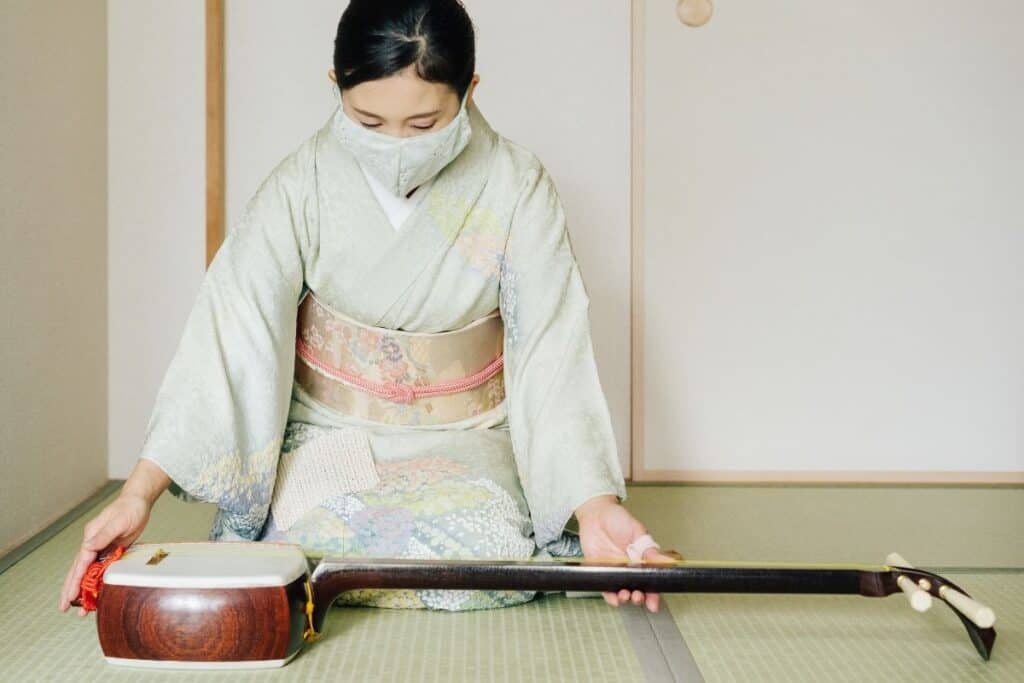
From genre to genre, the bachi or plectrum used to play the shamisen varies in size, shape, and material. Nagauta shamisen bachi can be created out of three different materials: wood, plastic, or ivory. While many teachers oppose the use of plastic.
shamisen strings are plucked with a bachi in most genres. , the sound of a shamisen is similar to that of an American banjo, in that the drum-like structure intensifies the sound of the strings.
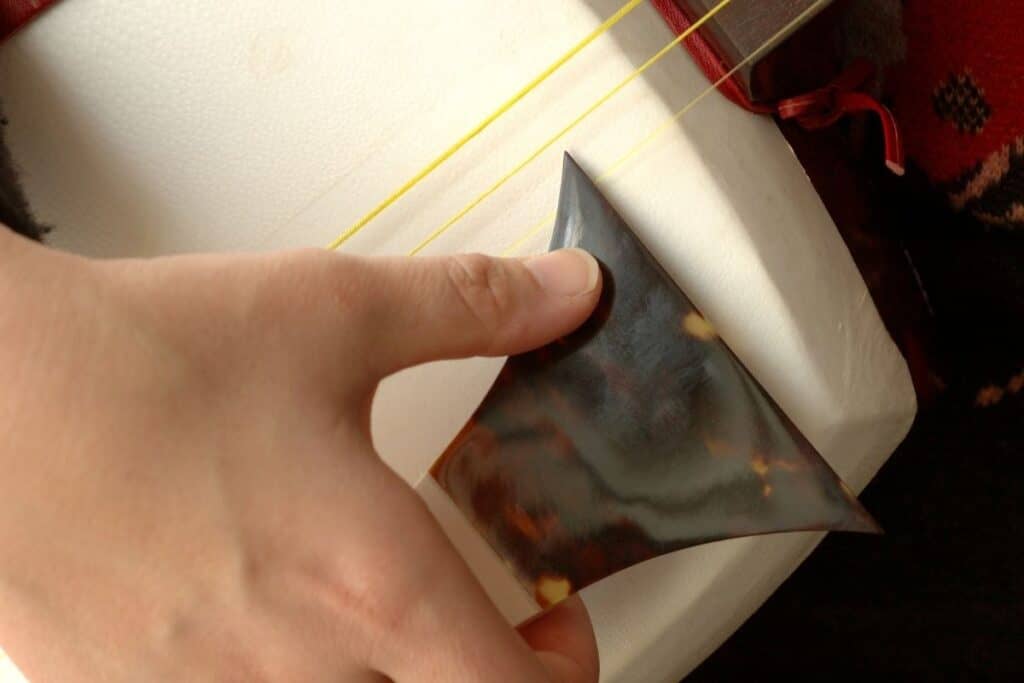
The bachi is frequently used to strike both string and skin, generating a highly percussive sound, similar to the clawhammer technique of American banjo playing.
The shamisen is plucked with the fingers when performing kouta (meaning “little song”) on it, and occasionally in other genres. The shamisen is sometimes bowed using a violin bow, comparable to how the koky is bowed.
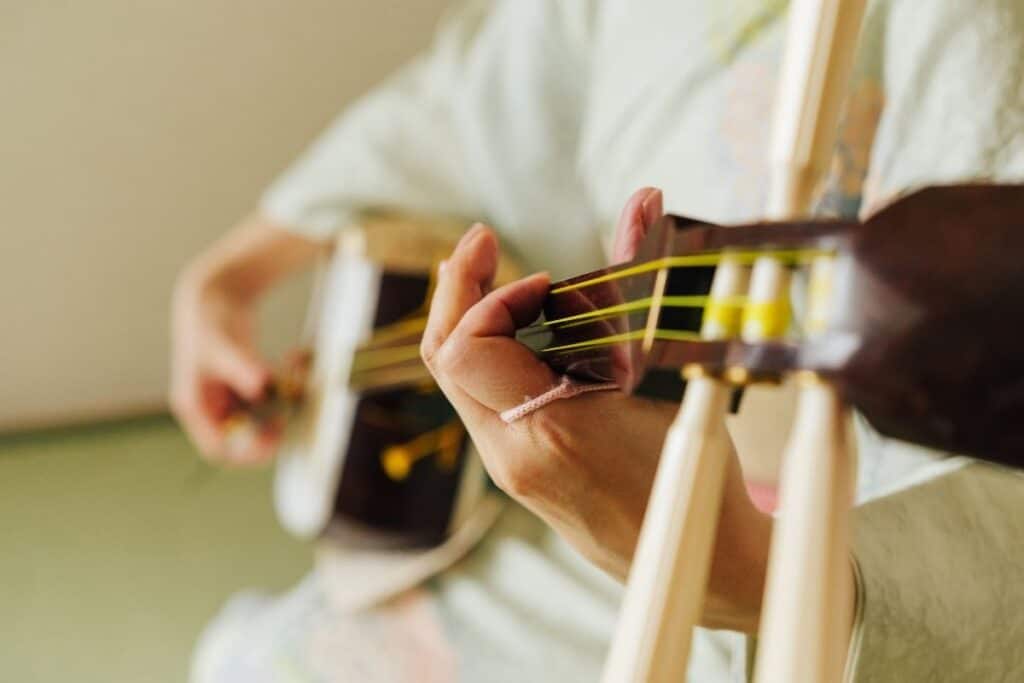
Check out this wonderful performance of the Shamisen by two very talented artists.
SHAMISEN AND GUITAR WORKSHOP VIA TRIPADVISOR
With the shamisen, you may delve into the fascinating realm of traditional Japanese music. Learn the fundamentals of playing the Tsugaru shamisen, a three-stringed musical instrument comparable to a guitar, and discover how one of Japan’s most unique sounds is created. Following that, attendees will get the opportunity to try out the Okinawa shamisen (jabisen), an ancient instrument that is frequently compared to a banjo.
Please meet your instructor near Tokyo Tower ticket counter. You will then proceed to the experience location 10 minutes before the program begins.
Tokyo Tower, 4 Chome-3 Shibakoen, Minato City, Tokyo 105-0011, Japan

